Ireland’s Wildlife contributor Albert Nolan urges communities to champion wildlife as part of the nationwide Tidy Towns initiative.
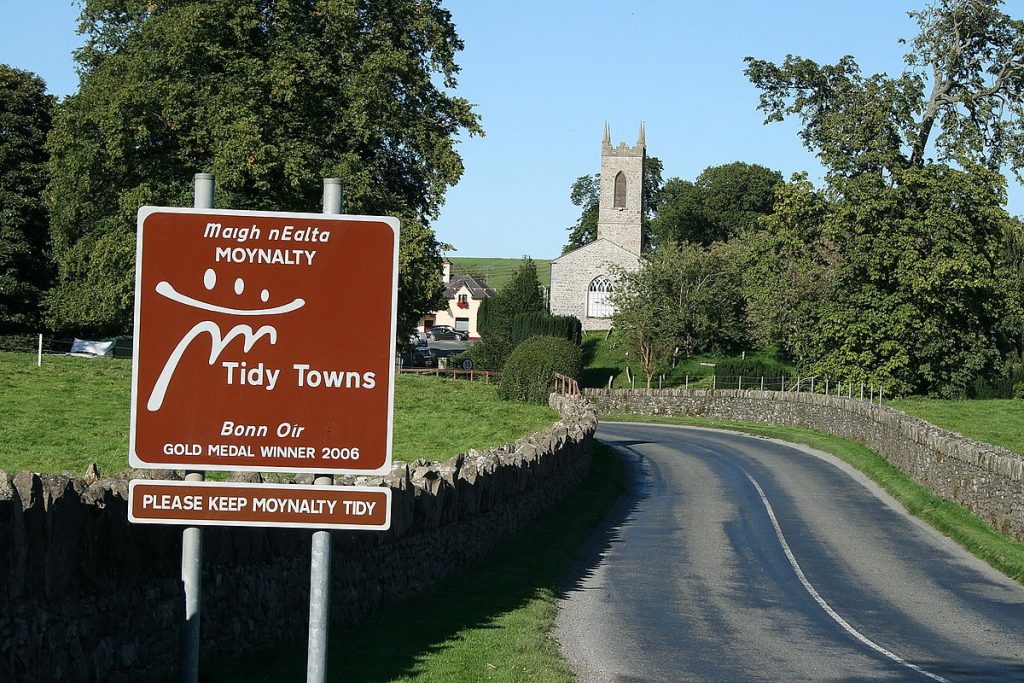
Spring had forgotten about our part of the world as a chilling wind greeted us in the morning. Bags and pickers were quickly shared out and everyone was glad to start walking and get the circulation going again. Our first litter pick of the year for tidy towns had begun and all around the county similar groups were dusting off the cobwebs and preparing for another year off enhancing their community. Over the coming weeks flowers will be planted, pots painted and lawns trimmed to within an inch of their lives.
Over the last few years the focus of the Tidy Towns award has shifted onto nature and the positive role that Tidy Towns Groups can play in creating new wildlife habitats, protecting existing ones and raising awareness throughout their communities. This section of the Tidy towns is worth 50 marks and many groups struggle around ideas for projects and how to start protecting wildlife.
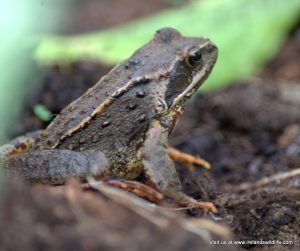
Our urban areas can be quite diverse compared to the surrounding countryside. A field of tightly mown grass with a well-managed hedgerow will support some wildlife. But dotted around our towns there are often the remains of hedgerows, old trees, grassy margins along rivers and abandoned ground that has been colonised by wildflowers. People too encourage nature into their gardens by putting out food and planting wildlife friendly plants. We might have swapped the countryside for the bright city lights, but our need to be connected to nature is as strong as ever.
The first step is to carry out a wildlife survey and draw up a plan that includes actions for nature and who is going to be involved. This might sound daunting but having a clear plan is necessary and gives a focus to the group for the next three years. You know your area better than anyone and what habitats should be included. Rivers, ponds, railway hedgerows, old stone walls, church grounds, parks and old trees can all be part of the plan. Mark these on a map and link them together to form a walk with points of interest.
These should not be viewed in isolation as nature needs green corridors that connects all the different habitats together. I have often followed long tailed tits as they fly from one street tree to another and go from one edge of the city to the other. Starting in a blustery Westfield’s Nature Reserve they follow this avian highway along O Callaghan Strand. Stopping briefly in Arthurs Quay Park they continue out along the Dublin road and out along the canal. If we had a birds-eye view of the city it would appear as a patchwork of interconnected green spaces.
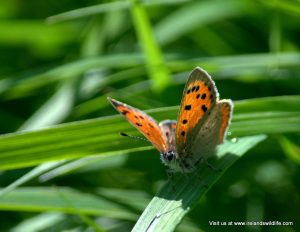
Don’t let any records you gather go to waste: submit all your wildlife sightings to the National Biodiversity Centre in Waterford. This amazing project is building up interactive maps for all of Ireland’s flora and fauna and there are still many gaps to be filled in. They also run training workshops on how to identify everything from seaweeds to butterflies, and these are great opportunities to develop your skills.
Birds are a great group to start recording and don’t worry if the only bird you can identify is a garden robin or the swans on your local river or pond. For me the tidy towns is not just about the physical work but an ongoing education around the importance of nature in our environment. A bird list is a living report that can be added to as your skill and knowledge increase.
Try involving children from a young age, as they are the next generation of volunteers and the inheritors and protectors of the natural world. Schools are already doing excellent work through the green flag awards. The students could also record the birds they see in the school-yard and the appearance of the first swallows in spring. For the older classes they could write up a short report in Irish, encouraging use of the language in a new area. Another idea is to run a wildlife photography competition, with a prize like free membership off Birdwatch Ireland for a year.
If there is space in the school grounds nest boxes can be put up. Also consider larger boxes for owls that can be placed in churches or kestrel nest boxes on the roofs of new supermarkets or even hotels. A local Men’s Sheds or students in a woodwork room can make up the boxes, and they then be sited within the community. The putting up of the boxes should be the last step and like many projects in life it is the engagement and awareness along the way that reaps the real benefits. Lastly take plenty of photos and this goes for any project you do, as they provide a visual record of all the work that has been carried out.
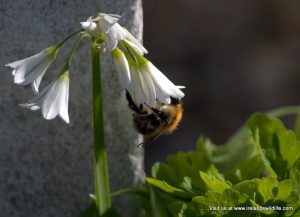
Insects are often the forgotten treasures of the Tidy Towns. Without them our bird life will be a lot poorer and they keep our environment healthy by pollinating our plants, eating garden pests and recycling everything from road kill to bananas, returning trapped nutrients to the soil.
Nature’s food chain starts with plants. These attract insects that in turn are eaten by birds and bats. By having a wide range of wildflowers this will attract the greatest diversity of Butterflies, Bumblebees and Moths. Most insects are on the wing from early Spring to Early Autumn and it is important to have a succession of flowering plants throughout the year. When Queen Bumblebees emerge from hibernation they have to tend and feed their larvae.
Flowers like dandelions are a precious source of food for them, so please don’t be reaching for the sprayer every five minutes. Ivy is another excellent plant as it flowers later in the year and produces berries in early spring for birds as they get ready for the breeding season.
The bases of hedgerows are rich in flowers and once the view of drivers is not impeded a margin could be left uncut. In our gardens and public spaces choose a sunny quiet patch and allow the native grasses and flowers to grow. A window box or hanging basket can be filled with nectar rich plants that will bring butterflies right up to your doorstep.
For more formal areas herbs are ideal and they can be grown in pots or in a flower bed. They look attractive, smell nice and are excellent from butterflies and bumblebees. The larvae of many insects feed on certain plants. For example the caterpillars of the beautiful Orange tip butterfly feed on the cuckoo flower that is found in damp habitats. Also many of our butterflies/moth larvae feed on nettles so leave a few nettle plants to grow in sunny corners of your gardens and green spaces.
Try not to be too tidy in the garden or park as many insects hibernate in the hollow stems of flowers or in the leaf litter. If you want to grow just a few plants for wildlife and cover all the major groups try Honeysuckle for moths, Buddleia for butterflies, Marigolds for Bees and Elderberry for birds. Use of herbicides and pesticides should be restricted as not only do they kill the food plants of insects they also wipe ladybirds and hoverflies that are a natural way of controlling greenfly.
Trees are the fabric of any human or wildlife community. They clean the air, provide nesting opportunities for birds and food in the shape of berries or nuts. Our Native trees are the best as they have had many generations to build up a relationship with a rich community of Lichens, Insects, Birds and Fungi. Again planting the trees should be the last act. Research has shown that when the local resident are consulted from day one around where the trees are going, the reasons where why they are planted and the benefits vandalism is reduced and the trees have a better chance of surviving.
The important consideration is the right tree in the right place. If you have a small paved in front you can grow fruit trees like apples in pots or even a Buddleia bush. Medium size gardens can accommodate medium trees like Mountain ash, Hawthorn/Blackthorn or Holly. Only the largest gardens or parks can grow the giant Oak, Beech and Ash trees. Involve the community
Trees over a hundred years are becoming increasingly rare and an excellent project is to get the local children to gather the seeds in the autumn and sow these so that link is maintained. It takes at least a century for some species to attain their full glory so planting a tree today is something for your great grandchildren to enjoy.
Water is essential for life and even the smallest of ponds will attract the predatory larva of Dragonflies and if you are very lucky frog spawn in early spring. Other projects to consider is a study of creatures of the night and this can bring people into the unseen and fascinating world of Bats and Moths. Don’t forget about old stone walls and the interesting community of plants that thrive on them. Repointing should be done with care and where possible using lime mortar.
As always work with the law and avoid cutting hedges between March 1 and August 31. Bats are also fully protected but don’t despair and contact your local wildlife ranger with any questions or concerns. Having the wider community on board is vital so promote your projects on local radio, by a newsletter or Facebook.
So if you are looking for a way to get involved this year and make a real difference to your community and wildlife why not give a few hours of your time and help out. We need all the wildlife champions we can get and the biggest impact we can have on wildlife is in our own gardens and communities.
Comments/questions to [email protected] or 089 4230502
Photo Credit: IMG MoynaltyTidyTown2993“, licensed under Public Domain via Wikimedia Commons.



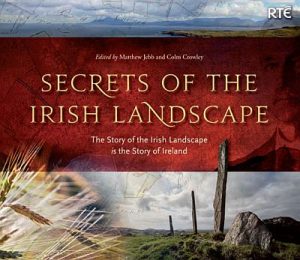






1 comment
Marir
Albert
We in Hollywood Tidy Towns have cleared a little “Wood walk way” with old trees a Spring ..
Would love to create a Bird Sanctuary
Or some Biodiversity that will earn extra points